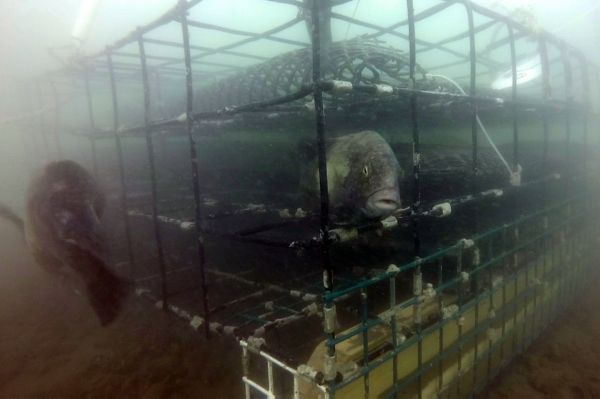NOAA Fisheries staff from the Milford Laboratory in Connecticut have created a Citizen Science Guide to help growers capture high quality underwater footage of aquaculture gear.
Terrestrial farmers, hunters, researchers, and even nature enthusiasts have long used trail cameras to capture how wildlife interacts with their environment. This process becomes more complicated when trying to digitally document how aquatic species interact with their environment due to factors like visibility, camera stand design, and the presence of microalgae in the water column. For these reasons, NOAA Fisheries staff from the Milford Laboratory in Connecticut have created a Citizen Science Guide to help growers capture high quality underwater footage of aquaculture gear.
For many years shellfish farmers have pointed to anecdotal evidence of fish species using oyster cages for their benefit, but sometimes seeing is believing. Three years ago a multidisciplinary team from the Milford Laboratory posed the question, do oyster cages used in shellfish aquaculture provide habitat similar to that of naturally occurring rock reef environments? “There are many misconceptions about aquaculture and the environment,” said NOAA research ecologist Julie Rose. “People may think aquaculture simply competes with wild capture, but we know many growers have reported wild fish swimming around their aquaculture gear. We wanted to know: could we document habitat benefits of shellfish aquaculture for wild species?” With some trial and error, a dozen GoPro cameras, and many hours on the water and in the lab, the research group has demonstrated that you can.
Continue reading at NOAA Fisheries.
Image via NOAA Fisheries.


